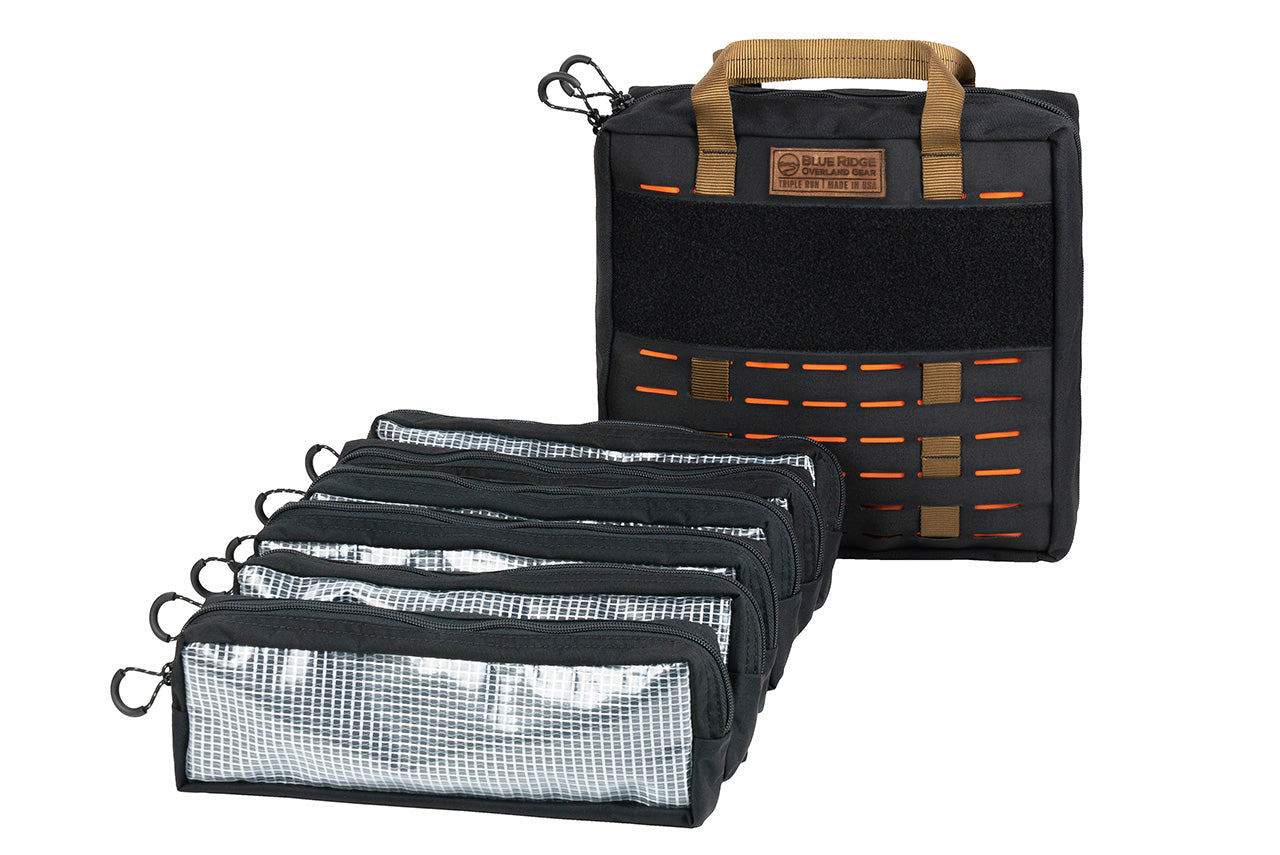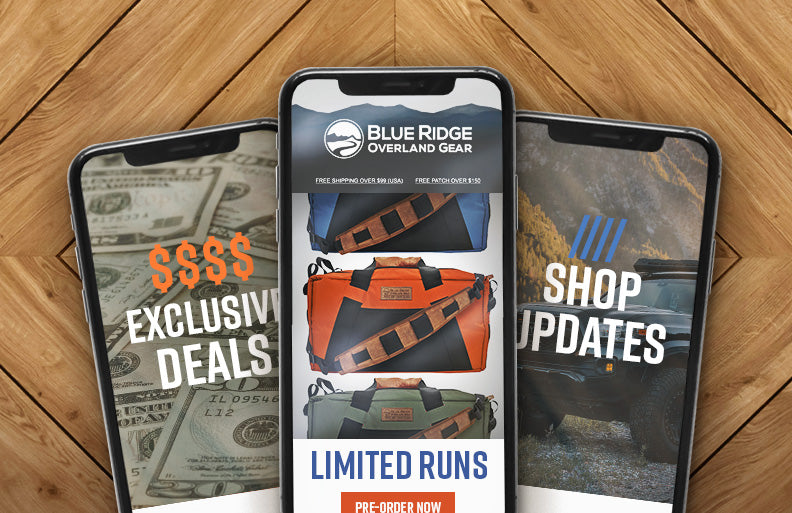How To Kit Your Vehicle For Any Trip | Vehicle Organization: Part 1
Whether you’re a newbie or a seasoned pro, we invite you to join us for the Overland Trip Planning video series. Our goal is to help you better plan and prepare for your next adventure. These conversations will encourage you take on your next overland trip with maximum readiness and organization.
According to Blue Ridge Overland Gear founder and owner, Matt Akenhead, every one of us has a reason why we can’t leave our driveway for an expedition. “Our goal is to make sure that reason is never a gear-related issue,” Matt said. In this video series, we’ll help you identify what type of trip you are taking and how best to prepare for it.
WHAT KIND OF TRIP ARE YOU TAKING?
We’d like to introduce what we believe to be three levels of trip categorization. In the next few weeks, we’ll discuss each of these three levels in depth and how each category should affect the way you kit out your vehicle for a trip.
Basic Excursion (Level I)
Think of two-track gravel roads. This is any state park trip or campground excursion. In a Level I excursion, your vehicle is easily accessible to a towing service if the need arises. This is a trip in which you’ll spend very little time off the grid.
Intermediate Excursion (Level II)
In this situation, you spend significantly more time off the grid and are in a more remote location. You are still accessible to a towing service if need be.
Advanced Excursion (Level III)
In a Level III excursion scenario, you are spending maximum time off the grid. You aren’t in a situation where your vehicle can be recovered by a tow truck. In this most extreme type of overland travel, your only recovery options are self-recovery, or recovery assisted by a comparable vehicle.
===========================
GEAR STORAGE AND VEHICLE ACCESS POINTS
In kitting out a vehicle for a trip, we’ve identified three areas of accessibility in every vehicle. Prioritizing and organizing your stuff can lead to a much smoother trip and allow you to be prepared if an emergency arises.
Access Point I
All gear in an Access Point I should be immediately within reach of the driver. These are items such as glass breakers, seat belt cutters, first aid kits and cash for tolls. The areas of your vehicle we recommend for storing these items are visors, consoles, glove box, and side pockets.
Access Point II
Gear stored in an Access Point II area doesn’t necessarily need to be within reach of the driver, but should still be almost immediately accessible. This would be gear located and stored on the back of the seat and cargo attic. Some examples would include items like winch controllers, fire extinguishers, and road flares.
Access Point III
Items stored in an Access Point III area are things that are not critical to a recovery situation. This is your trunk space, or behind the back seat area of the vehicle. These are the items in an area you’d still like to keep organized for easy access but aren’t recovery-related; items such as camp lighting, food, chairs, and extra clothing.
We believe the level of excursion you’re undertaking significantly affects how your vehicle should be kitted. What you should pack for your journey depends on your excursion type. This perspective is a great filter to sort out all the “stuff.” We’d like to help you spend less time digging around your vehicle through mountains of gear. It’ll help you determine what’s really necessary for a trip and what is just taking up space!






